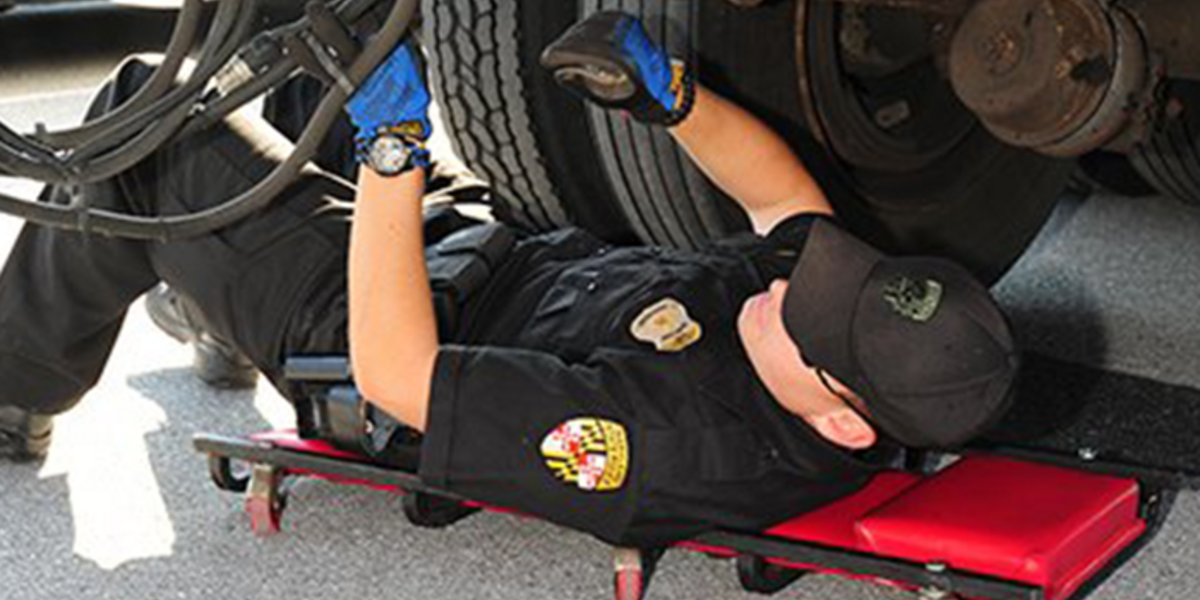CVSA-certified enforcement personnel will once again be conducting roadside inspections on commercial motor vehicles (CMVs) during the Commercial Vehicle Safety Alliance’s (CVSA) Brake Safety Week, August 24–30, to identify and remove CMVs with critical brake violations from our roadways and raise awareness about the dangers of faulty brake systems.
Properly functioning brake systems are crucial to safe CMV operation. Brakes must be routinely inspected and consistently maintained so they operate to the manufacturer’s specifications throughout the vehicle’s life. Improperly installed or poorly maintained brake systems can reduce braking efficiency, posing a serious risk to public safety.
Data and research are clear:
-
According to the U.S. Department of Transportation’s Federal Motor Carrier Safety Administration’s Large Truck Crash Causation (LTCC) Study, 32.7% of large trucks with pre-crash violations had brake problems.
-
Brake-related violations accounted for the largest percentage of out-of-service vehicle violations (25%) cited during last year’s Roadcheck America.
-
The LTCC Study’s relative risk analysis found that large trucks involved in crashes where braking capacity was critical were 50% more likely to have a brake violation than those in crashes where braking capacity was not critical.
-
Of trucks involved in brake-critical crashes, 45.5% had brake violations, compared with 29.9% of trucks involved in similar crashes where braking was not a factor.
Brake Safety Week aims to reduce the number of crashes caused by poorly maintained braking systems on CMVs through roadside mechanical fitness inspections and the removal
of unsafe vehicles from service.
In addition to inspections and enforcement, law enforcement agencies will conduct outreach to educate drivers, mechanics, owner-operators, and others on the importance of proper brake maintenance, operation, and performance—an integral part of the safety initiative’s success.
During Brake Safety Week, inspectors will primarily conduct the North American Standard Level I Inspection, a 37-step procedure that examines driver operating requirements and vehicle mechanical fitness. Brake-system inspections will check for loose or missing parts; air or hydraulic fluid leaks; defective rotors; pushrod travel measurements; mismatched air chamber sizes; air reservoir integrity and mounting; worn linings, pads, drums, or rotors; required warning devices; and other brake components. Vehicles with defective or out-of-adjustment brakes will be placed out of service.
In the 12 jurisdictions using performance-based brake testing (PBBT) equipment, braking efficiency will be measured. PBBTs determine efficiency by measuring the cumulative brake force for the entire vehicle and dividing it by the total vehicle weight. The minimum braking efficiency for trucks is 43.5%, as required by Section 393.52 of the U.S. Federal Motor Carrier Safety Regulations and the CVSA North American Standard Out-of-Service Criteria.
Brake Safety Week is part of the Operation Airbrake Program, sponsored by CVSA in partnership with the Canadian Council of Motor Transport Administrators and the U.S. Department of Transportation’s Federal Motor Carrier Safety Administration.
What You May Not Know About Brake Systems and Inspections
-
Automatic brake adjusters are required.
-
How to verify that your ABS is working.
-
What is a PBBT inspection?
What is the proper method for a driver to adjust brakes with automatic slack adjusters?
Answer: The proper method is to apply ten sharp brake applications daily and just prior to a roadside inspection.
National Truck Driver Appreciation Week
September 14–20, 2025
Nearly every aspect of daily life is made possible because a truck driver delivered the goods and resources people need.
National Truck Driver Appreciation Week is a time for America to recognize and thank all professional truck drivers for their hard work and commitment in performing one of our
economy’s most demanding and important jobs. The 3.5 million professional men and women
in this industry not only deliver goods safely, securely, and on time—they also help keep our highways safe.
From children handing out lunches to “I ❤️ Trucks” signs along highways, the public has found creative ways to express appreciation. As we reflect on the past few years, it’s worth considering where we would be today if truck drivers had not continued delivering personal protective equipment (PPE), food, and medical supplies during the COVID-19 pandemic.
This week in September is a small but meaningful way to show appreciation. Start planning now to do something special for your drivers during this week dedicated to recognizing their vital contributions.









